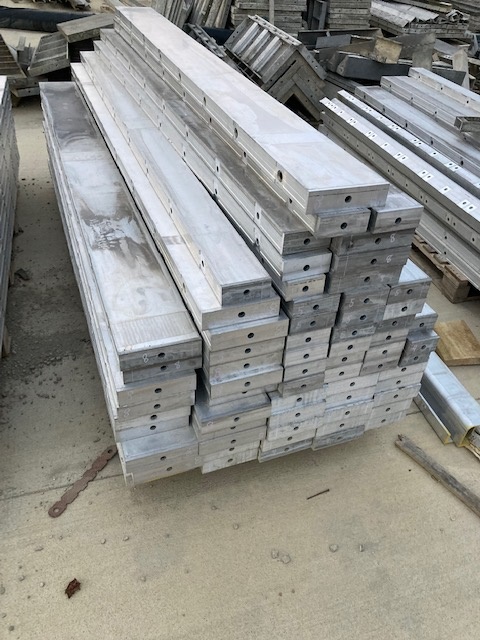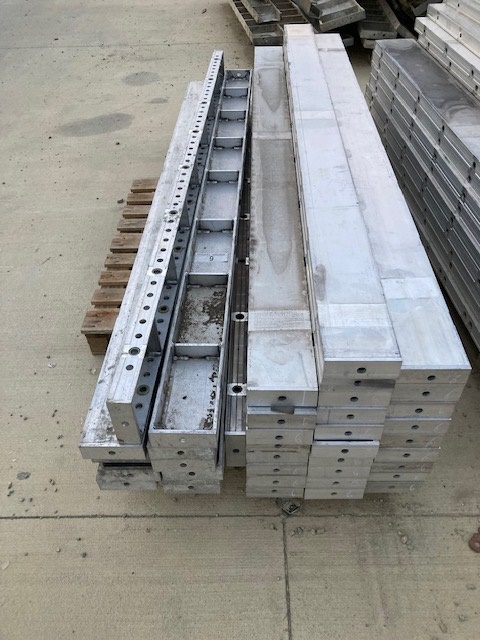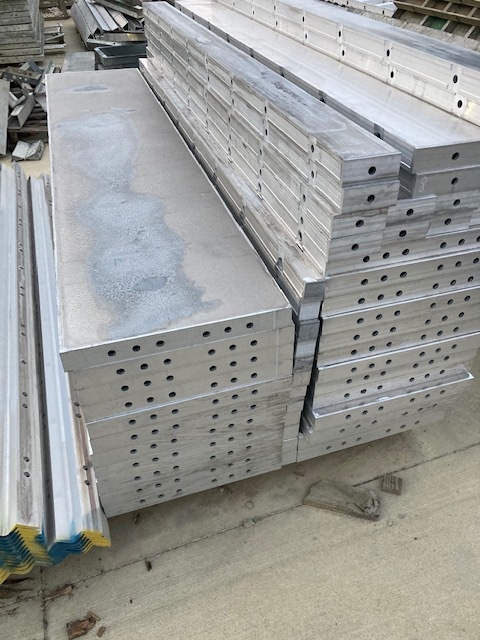For Sale: New Aluform Forming Panels – 72″
A CFA member has two pallets of brand new 3-0 x 6-0 smooth faced aluminum panels for sale with a 6-12 hole pattern. These forms are still shrink-wrapped and on the original pallets. Total number of 60 forms available.
For more information or for a quote, please contact John at (317) 201-8229 or email to johnh@weberconcrete.com.
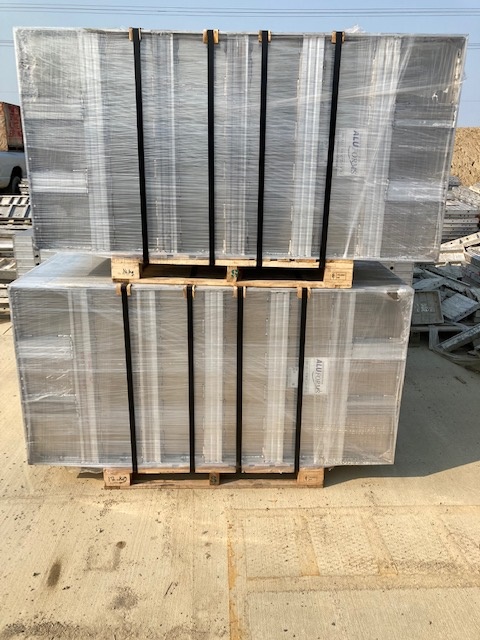
For Sale: New Aluform 8-ft and 9-ft Panels
A CFA member organization has a new inventory of Aluform, smooth-faced panels to move. Hole pattern is 6-12 and they have full sets of both 8-0 and 9-0 in stock, 3-0 standard width. Sets come with a complement of fillers including; 24″, 20″, 18″, 16″, 14″, 12″, 10″, 8″, 6″, 5″ and 4″ as well as outside corners (nominal & full); inside corners (4×4 nominal & full); and inside corners (4×6 nominal & full).
For more information, contact John @ (317) 201-8229 or send an email for full inquiry.
Concrete Foundations Association Updates Market on Shortage of Form Ties: Shortage Estimated to Affect Residential Construction into 2022
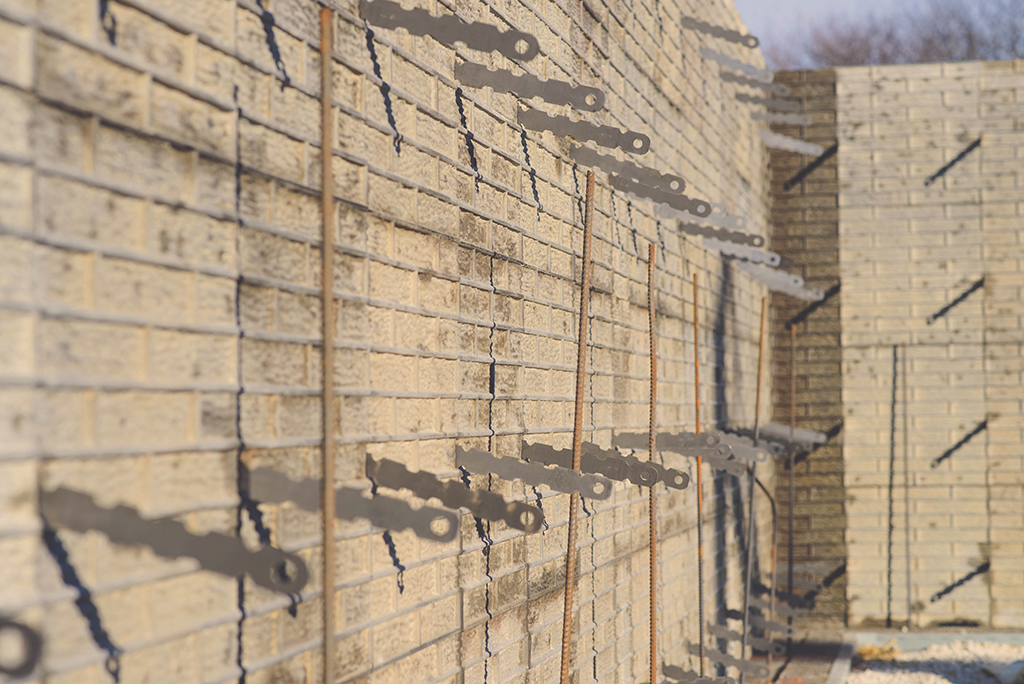
The Concrete Foundations Association (CFA) – the leading organization serving as the voice of cast-in-place contractors – has provided an update related to the continued industry-wide effort to mitigate the current shortage of steel form ties across the North American markets.
According to James Baty, Executive Director of the CFA, while the shock of the shortage of steel form ties earlier this year has worn off and the industry has seemingly settled into current allocation levels, contractors must remain patient and diligent. Baty noted that a slowing of the record housing start pace is a partial influence on the productivity rate. Still, he noted, predictions for resumed high demand combined with the reality of continued challenges in both domestic and import supply results in a continued threat for restricted growth in the residential construction economy.
“We continue to host stakeholder conferences related to the supply of steel through domestic production and foreign market import,” said Baty. “Further, we are diligent about a variety of efforts to create new supply options. All indicators point to further restriction to normal flow and a sustained suppression of the present demand-level supply.”
Doug Herbert, current Board President for the CFA and president of Herbert Construction Company, a residential concrete contractor from Marietta, Ga., recently noted in the Association’s magazine that the issue had stabilized in the first quarter.
“When the wall tie shortage for concrete forming first appeared, the CFA did a terrific job of gathering all the stakeholders throughout the supply chain to understand the issues causing the shortage. We then sounded the alarm of the crisis throughout the industry. After a period of stabilization in the spring, there now appears to be a further tightening of the supply of wall ties. This will inevitably lead to increased costs and could result in contractors struggling to find ties,” stated Herbert.
In a press conference held June 8 at the World of Concrete in Las Vegas, Baty noted that the biggest issue right now is the cavalier attempt to create solutions. For example, he stated, numerous companies have come forward claiming to be able to produce ties for the market from similar gauge steel coil.
“The risk to the industry right now is great when considering an alternative steel form tie product,” said Baty. “Production capacity of the steel ties is not the identified problem. This shortage remains one of raw steel coil meeting the specifications necessary for the performance along with the effective shipping of imported ties. Domestically, the remaining steel mills capable of producing this high-strength steel are not able to step up and while significant inventories of ties in foreign markets exist, container space has reached an ultra-competitive level.”
The Concrete Foundations Association strongly urges contractors to continue purchasing steel form ties from trusted and reliable sources or require verified testing results from suppliers to prove tensile capacity and break-back brittleness. The form tie in any forming system maintains a designed separation between the two layers of formwork to result in the expected structural wall thickness. It must withstand the fluid-like weight of concrete as the height of the concrete placement increases. When the wall is completed and the concrete has reached sufficient strength, the forms are often removed, and the ends of the form ties are broken off for safety and for wall finish.
Supply shortages in other material markets are also influencing the productivity of cast-in-place concrete construction. Not just limited to residential concrete, removable concrete forming and steel form ties are found with considerable variety. While aluminum forming systems have been the focus of this shortage, steel-ply, a forming system where steel angle frames support plywood panels are also experiencing supply shortages due to the plywood industry. Even the insulated concrete form industry is stretched out in product lead times from shortages of polystyrene and production labor.
“After spending the last five weeks communicating with representatives from all facets of this issue, we now believe this shortage will be more of a reset to the industry than a short-term struggle,” stated Baty.
Containers have increased in cost more than four-fold in recent weeks with reports of continued escalation as retailers seek preferred space ahead of the holiday season. This means that any available inventory that may exist for import will be fighting for space. Domestically, while there have been indications of commitments to elevated steel runs, most have not been realized or have fallen far short of the demand. This presents as a finite amount of the actual rolled coil required for the tie manufacturers to stamp and simply moving volume around between existing and new producers by reducing allocations.
CFA will be hosting in-person discussions on this issue at a round table session held during #CFACON21 in Charleston, S.C., July 22-24, to further inform Association members of this situation, consider risk management issues as well as identifying any further recommended steps. Contractors interested in learning more about this event are encouraged to visit the event at www.cfaaconcretepros.org or for further information on the situation reach out to the CFA either by calling 319-895-6940 or by email directly to Baty at jbaty@cfaconcretepros.org.
How Google Might be Limiting Your Employment Exposure
By Chris Nastav, KC Web Specialists – A CFA Consulting Member
As an active CFA consultant, we feel an obligation at times to point out the things in our specialty area that might be of importance to you.
If you are swimming in a sea of work right now and struggling to find employees, you may not care about increasing your current workload. You might even be turning down work or scheduling stuff so far down the road you might as well not even count it as business.
But, as a savvy business owner, you should at least have your ear to the ground on a major culture shift that’s running rampant out there. This shift in culture may dramatically impact the long-term viability and fiscal stability of your company.
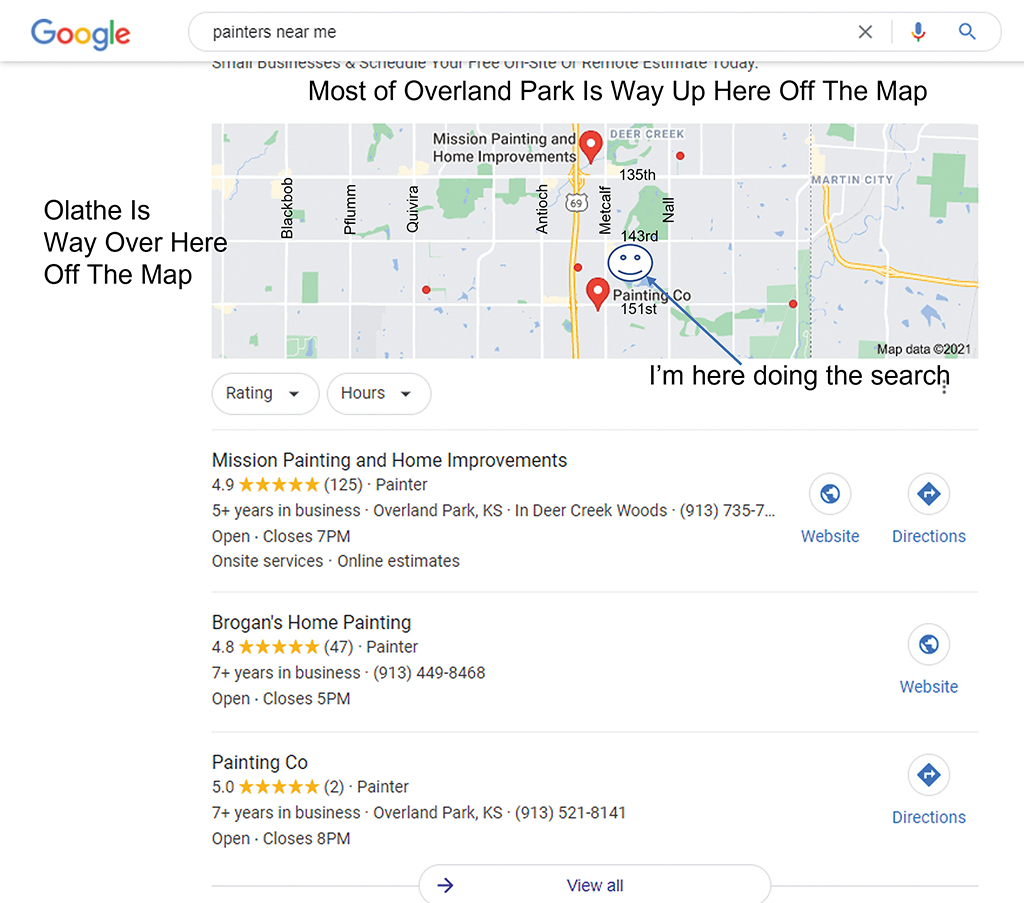
The shift in behavior is surprisingly simple. “People” who are looking for business services like yours are increasingly looking for service providers using the term “near me”.
- Contractors Near Me • Foundation Repair Near Me
- Builders Near Me • Foundation Specialists Near Me
- Concrete Designer Near Me • Concrete Specialists Near Me
- Construction Companies Near Me • Construction Workers Near Me
It is shocking how quickly and how pervasive this behavior has become in a very short period of time. The following numbers come directly from Google:
- 2 years ago, five percent of searches in Google contained the term “Near Me”.
- 1 year ago, about 20 percent of searches in Google contained the term “Near Me”.
- Today, 30 to 50 percent of searches in Google contain the term “Near Me”.
In 2018, 50,000 Google searches were done across the United States for concrete/construction related terms containing the phrase “near me”. In 2020, that number was about 500,000. In just two years we went from 50,000 people to 500,000 looking for concrete related business based on the term “near me”.
As a savvy business owner these numbers should make you at least pause and take a little bit of time to evaluate how well your business can respond or is responding to this culture shift in searching behavior.
A good starting pointing would be to ask the following question.
How many business locations do I have?
If your answer is one location, then you definitely have a potential current and future problem responding to how people are looking for business services.
Furthermore, if your answer is, “I don’t really care about this ‘near me’ problem because I don’t get any of my work from Google leads anyway,” please consider this. Two years ago, five percent of people cared about doing business with a company near them. Now 30to 50 percent of people are looking for a company that is near them to do business with. No matter how or where you get your work from, know that “people” have dramatically shifted their thought processes and behavior. Location has become incredibly important to them.
So, what’s the answer to this “near me” dilemma facing all service businesses?
There are multiple solutions to this problem but, to be honest, they’re complicated and they’re somewhat difficult to implement.
Unfortunately, unless you make some dramatic changes to your business or your business marketing strategy, you are going to see a decreasing share of new business. Remember, even if your business is not based on leads from Google searches, “People” are still thinking in their heads, “Hey Google, find a concrete specialist near me.”
Here are a variety of different options to get ahead of the “near me” problem. Some are these are definitely easier than others:
- Move your one office location closer to where most of your customer base is concentrated.
- Open a second/third/fourth office in cities where your customer base is concentrated.
- Increase your Website’s local SEO efforts to be more location specific.
- Do Google Ads by location.
- Amp up your Google My Business page.
- Add tons of city pages to your website and amp those city pages up with local SEO.
- Start doing short videos of the work you do in the different cities. Include in those videos talking points where you mention the city in which you are doing the work. Post these on YouTube in your business YouTube channel.
To get ahead of this “near me” culture shift, you must start making noise out there on the internet about how you are the best option for them. You are the best option, because you are either near them or you’ve done work near them.
There are many things you can do to your website content. Website SEO and the other Google Marketing tools can help your business for all these “Near Me” searches.
This problem is not going to be easy to solve, and it’s definitely not going away. The numbers over just the last two years suggests it’s going to get even harder and harder for service businesses with just one location.
Step 1 – If you own a service business with just one location we feel you really have no choice but to take the time and immediately understand the “near me” problem. You have to figure out how this “near me” culture shift will impact your business. This problem isn’t going away and it won’t get better if you ignore it.
Step 2 – Once you understand the scope of the problem as it relates to your business, you literally have to start now and do whatever it takes to get ahead of the problem. It is not easy to resolve, and you will continually need to work at it over a long period of time for the foreseeable future.
About the Author: Chris Nastav is the owner of KC Web Specialists, an Army Veteran, current CFA consultant in good standing, and Certified Google Partner with over 15 years of business experience helping local companies navigate the Web and SEO.
Destination Employers Promote Education
CFA Signs MOU with Columbia Southern University for Member Benefits

#CFACON2021 takes place next month in Charleston, South Carolina. In many ways, this event can be seen as focusing on a primary variable, risk and need in your company–workforce development. Keynote speakers for the event, Mack and Ria Story, will lead you along a path of transformation to become a “destination employer”. Do you want to lead in the marketplace and attract the best workforce? You must provide substantive and tangible benefits that partner with their direct pay rewards.
The Concrete Foundations Association (CFA) has initiated a program for member companies that provides one such opportunity. During the World of Concrete 2021 in Las Vegas, Association Executive Director James Baty met with representatives from Columbia Southern University (CSU), an online university based in Orange Beach, Alabama. CSU “strives to change and improve lives through higher education by enabling students to maximize their professional and personal potential.” The result of this meeting is a new member benefit program added to the already immense value that becoming and remaining a CFA member offers.
Confucius is quoted, “Education breeds confidence. Confidence breeds hope. Hope breeds peace.” As tomorrow’s workforce leaders enter your workplace, one of the best gifts or incentives that can be given to them is the empowerment to continue learning–to achieve something they perhaps set aside or to finish what they may have started. This relationship with Columbia Southern University is a foundational element to do just that. CSU offers associate, bachelor’s, master’s, doctorate, and certificate levels for a wide range of areas. Some of these include Occupational Safety & Health, Finance, Human Resource Management, Marketing, Project Management, Business, Psychology, and many more that can play an integral role in the evolution of your organization in addition to your co-worker or employee.
“Education is not the preparation for life; education is life itself,” offered by John Dewey, is an essential understanding for transforming your business to become a destination employer by helping your prospective and existing workforce find value in themselves as well as you. The construction industry has numerous certifications that can be obtained, but those pale in comparison to the culmination of hard work in an attained degree that speaks to a discipline or passion of interest, and one that can further aspirations.
With this new member benefit, CFA and CSU have combined to pave the way for persons in your organization to receive a 10% discount per credit hour. These credit hour rates include all textbooks, online access, flexibility and much more. Furthermore, the programs at CSU are specifically designed to meet students where they are by allowing transfer credit for all prior academic credits, training and relevant professional licenses and certifications. The transcript evaluation process, also complimentary, will assist any individual in your company in identifying what they already possess with where they intend to head to align for the most efficient and effective path to completion. CSU is also fully supportive of the GI Bill, military training credits and tuition assistance for active and veteran military.
Who is ideal for these programs? We know your company’s employees may have entered the workforce out of immediate need. Some may have started working to fund their future academic goals. Perhaps a mom, dad, spouse, or other relationship has put finishing a degree on hold for numerous life reasons. You can now help them complete those goals and visions with an online education program that leads to the right degree or degree of choice. You may also consider additional employer benefits such as tuition remission or tuition partnership to complement their commitment to work and evening education.
Through this Memorandum of Understanding with Columbia Southern University, the Concrete Foundations Association continues to seek out ways to meet you where your company and your staff are, while setting higher bars in the industry around you with exclusive access. For more information on accessing this newest member benefit, contact Executive Director James Baty at jbaty@cfaconcretepros.org or 319-895-6940.
A representative from CSU will be joining you at #CFACON2021 to talk in person and help you begin to offer or integrate this opportunity for your workforce. For more information on Columbia Southern University, please visit columbiasouthern.edu/Partners.
YOU’VE RECEIVED AN OSHA CITATION – NOW WHAT?
The 4-Step Process Every Company Should Know
By Julia Kunlo, MSOSH, CSP

The Occupational Safety and Health Administration (OSHA) usually conducts around 32,000 inspections a year. For companies who are involved in an inspection and receive fines/citations, most are surprised by the hazards discovered and unsure of next steps to take. While avenues exist to contest findings, lower penalties, and delete citations, there are very specific steps to take and deadlines to hit in order for these options to remain available. Are you prepared to respond to an OSHA citation?
Responding to an OSHA citation appropriately requires knowledge, manpower, and decisiveness. Follow the 4-step process below to ensure you remain compliant, protect your business, and minimize costs and fines.
1. Correct the Hazard
- Create an action plan and take steps to correct hazards as quickly and thoroughly as possible. Be sure to document every step you take (including emails, training records, relevant purchases, policy updates, etc.) so they may be presented later on as evidence of safety efforts. Appropriately correcting hazards within 24 hours may help your company to qualify for OSHA’s “quick fix” 15% reduction of penalties during the informal conference process.
- If your company does not have a safety manager, consider reaching out to a safety expert who can guide you on how to quickly correct hazards as per the OSHA standard. These experts will have templates, training material, vendor recommendations, and techniques that will ultimately save you time and money.
2. Post the Citation
- Post the citation (or a copy of it) near the place where the violation occurred as directed by OSHA. The goal of this step is to ensure employees are aware of the hazard they may be exposed to. The violation must stay posted for three working days OR until the violation is abated, which ever is longer. Even if you choose to contest the violation, you must post it. Failure to post the citation can result in fines up to $13,653 per violation.
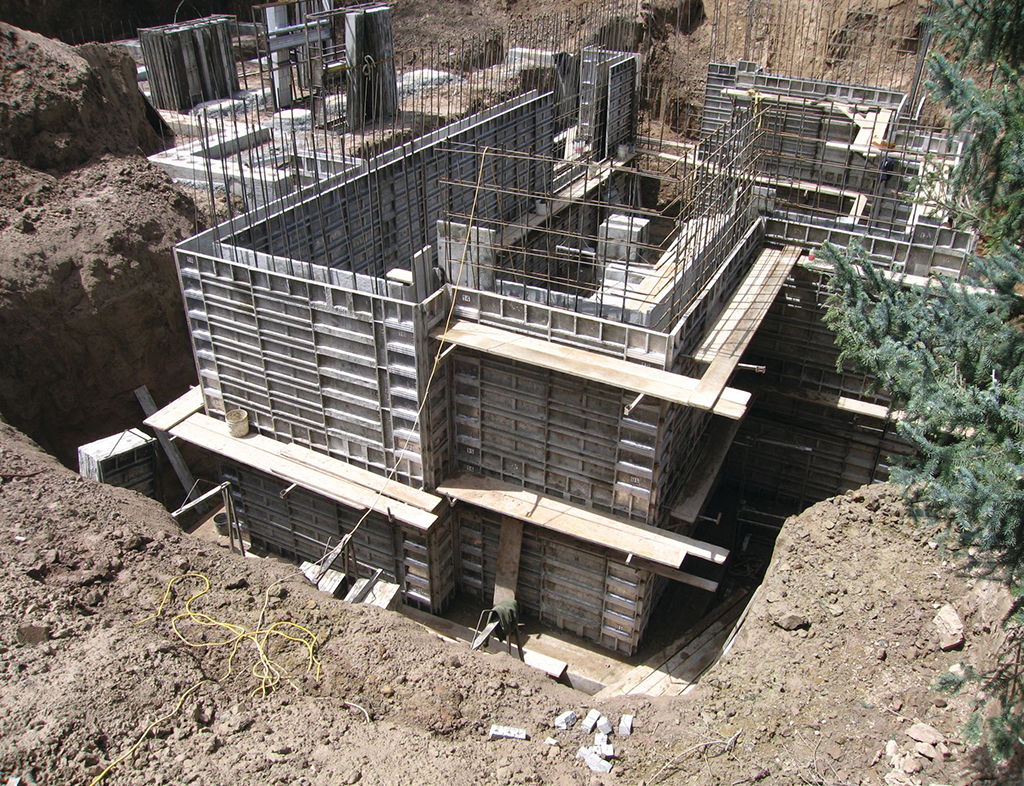
3. Request an Informal Conference
- As quickly as possible (and at least within 15 working days of receiving a citation), request an informal conference to review the hazards discovered. While this step isn’t mandatory, it is highly recommended. Benefits of an informal conference may include penalty reduction, extension of abatement dates, deletion of citations, and more. Willful violations (which have penalties as high as $136,532) are 10x more expensive than Serious violations; getting a citation reclassified can save your company considerably.
- Additional ways to fight for penalty reductions include citing a good safety record, requesting an adjustment based upon the size of your company, proving a “good-faith” effort towards safe work practices, and more. Consider requesting help from a lawyer or safety expert during this negotiation process if you are unsure of how to present your best case.
4. Decide: Agree or Contest?
- If you agree to the citation, pay the proposed penalty and correct the condition by the date mandated in your citation. You must submit an Abatement Certification letter to the OSHA officer to document this hazard correction. If it is later discovered that you did not abate the hazard appropriately, you may receive an additional failure-to-abate violation (which comes with fines up to $13,653 per day).
- If you disagree with the citation, you must contest it in writing to OSHA within 15 working days from the day you receive the citation (this letter is called a “Notice of Intent to Contest”). If you do not contest within this window, your citation will become a final order not subject to review by any court or agency. Once properly filed, the Notice of Intent to Contest suspends your legal obligation to pay penalties and make abatement efforts until the item contested has been resolved.
When faced with an OSHA citation, it is important that employers understand their rights and responsibilities. It is vital to act quickly, take steps to correct the hazard immediately, move forward decisively, and process paperwork in a timely manner during the 15-day working window after a citation is received. Missteps during this timeframe often result in higher fines and additional citations.
Author bio:

Julia is the Vice President of Evolution Safety Resources, a safety consultation firm. She works with clients to develop customized safety strategies that result in OSHA compliance, reduced incident rates, and ultimately increased profits. Julia can be contacted at j.kunlo@evolutionsafetyresources.com
INTERCONNECTIONS: Leveraging relationships built by common interest

During strategic planning this winter, the CFA Board of Directors strengthened its commitment that one of the primary benefits of this association membership is the network connections and the relatability of members across a broad range of demographics. In the coming weeks, you will be introduced to a survey for information about your company, filling in the details of many existing and new data points to allow association staff to connect members and give you more power in seeking out companies of mutual interest more quickly and directly. This is one of the latest ways we are helping you find powerful connections who recognize the benefit of being part of something much bigger.
Several months ago, we began this periodic feature in Concrete Facts to introduce some of the many personalities that make up the CFA. These are companies and individuals just like you and, at times, much different than you. What all have in common is they are #CFAConcretePros and, unlike most of you reading this magazine, they are a member.
In this issue, we introduce three new personalities from our membership, spread across a vast amount of the U.S. concrete foundation industry from Virginia to Ohio to Texas. Their backgrounds have similarities as well as differences. Their battles are not surprisingly, alike, and yet, their companies comprise the unique calico membership tapestry that continues to transform this industry.
Challenging Us to Be the Best by Constantly Seeking
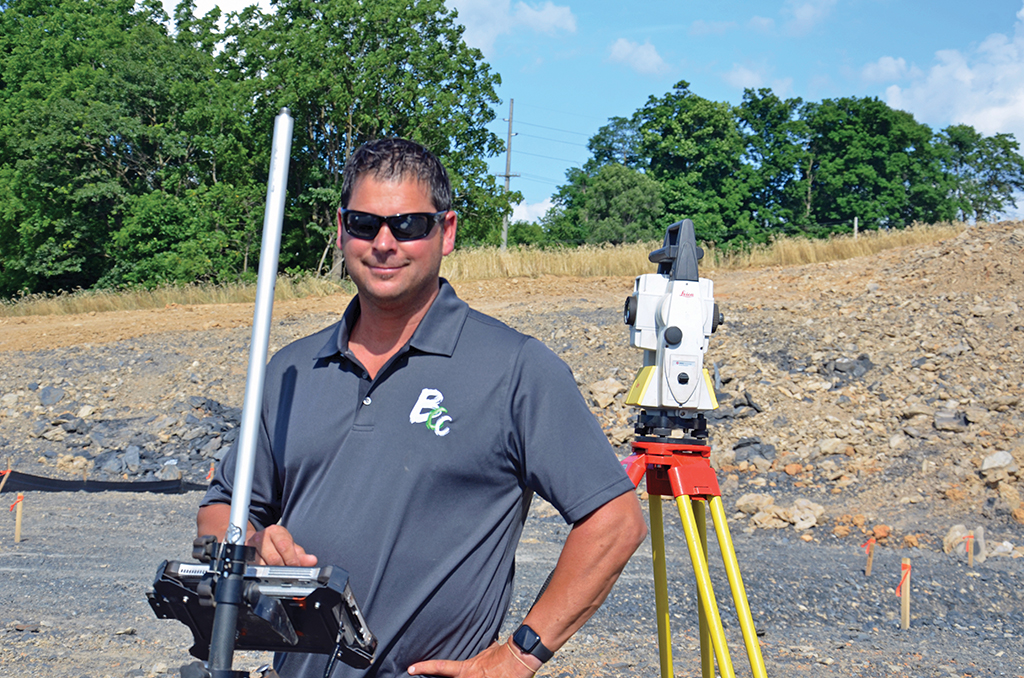
Danny Branner
President
Branner Concrete Construction LLC
Contractor Member
Broadway, Virginia
Customers and Coworkers: “I’m with you every step of the way.“
I fell into the concrete world by accident, really. In my final year of college as an Animal and Poultry Science major, my brother started a concrete wall company and asked me to come on board. Leaving behind my animal science plans, I joined his team and didn’t look back. Twenty-five years later, and a few job changes in between, I am in year five of my own wall company and continue to enjoy working in this industry.
Striking out on my own has given me a chance to focus on my passions and vision. I am passionate about not only doing the job but putting 100% into each new project. Regardless of what it is, I enjoy the challenge, the routine, the big and the small. Aside from this work ethic, I am passionate about the men and women I work with, my co-workers, ensuring they are highly respected and appreciated. In every sense, I could not do this job without them. They are my first priorities and the very cornerstones of this business.
When it comes to business and our customers, my two passions meet the customer where they are and they learn our mantra, “I’m with you every step of the way.” Although I recognize this is not the right fit for everyone, I try to be available at nearly all times. The world of concrete comes with some crazy hours and I’m okay with that. I strive to make sure that I meet my customers’ schedules, whatever they may be. I also do everything in my power to stick to the timeline. Customers, particularly contractors, appreciate being able to rely on my company at the expected time.
I try to live by the motto, “If you’re not growing, you’re dying.” I want to gain new ideas and perspectives to continue to grow professionally, and joining this Association has already been a key to success. For example, while attending the Rocky Geans Construction Business School in Charlotte, North Carolina, I was introduced to the Total Station for installing corner points and elevations for job sites. Rusty Combs (a CFA member) introduced me to Scott Carter and, within two months, I was installing points with great accuracy, which has become a big part of my company’s precision in constructing plum, level, and straight foundations.
Uncertainty has been the biggest challenge of 2020 and continues into 2021. To combat this, my company has looked strategically at ways to be efficient and profitable now so that, if production slows in the coming months or years, we are prepared to withstand a downturn. 2021 is a pivotal year. Business is booming but, while uncertainty remains, looking back, doing the very best work we can, maintaining high standards of integrity and valuing and protecting our employees is the most success we could possibly achieve. I’m ready for in-person events once again, making it to our annual convention and taking advantage of this critical time of increasing professional relationships and growing new ideas.
Forced to Change and Creative in Adaptation
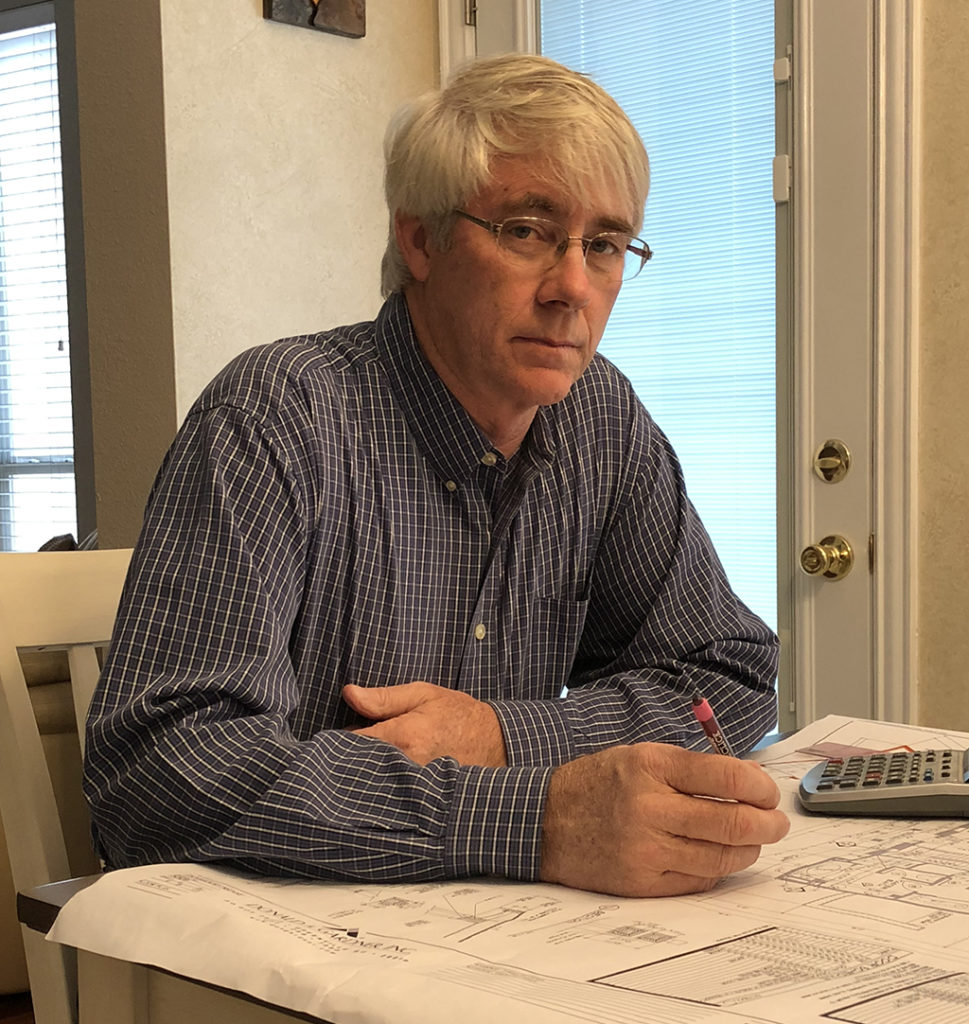
President
North Texas Basements
Contractor Member
Fort Worth, Texas
the “new” workforce — right is right, wrong is wrong and where “good enough” is an excuse
I started in the residential construction industry back in 1975 in the state of Ohio. After seeing the continual decline, I decided it was time to move and I ended up in the great state of Texas. You could say it was in my blood and, again, I started building homes. During weekend open houses, people from “up north” continued to ask me where I was from since I didn’t say “ya’ll”. Of course, my answer was Ohio, and the next thing from them was “we’re from somewhere up north — why aren’t there any basements?” So they want basements? I’ll give them some.
I’m just over-the-top passionate about the housing industry and doing the best I can for the homeowner. A home is the average person’s biggest investment. Therefore, it should be as important to anyone working on the site as it is to the owner. The owner deserves what they are paying for and they deserve to have it done correctly. I have continued to find that this creates problems with the “new” workforce — right is right, wrong is wrong and where “good enough” is an excuse.
My approach to customers is pure honesty. Of course, that isn’t always appreciated, but you don’t have to remember which story you told them! I get a lot of calls from people with foundation problems in Texas and I feel they need to know the truth. Knowing the real facts helps lead them to making a proper decision. It is part of my project preparation to let them know if there are problems with their plans before construction, believing there is absolutely no reason to build a mistake.
When I joined the CFA, I found very similar characteristics and a lot of differences from most companies I bumped into throughout the industry. I idealize the Association’s leadership! It’s honest, it’s sincere, it’s helpful, it’s REAL! I’ve been in other associations and sometimes you feel pushed off. The CFA is absolutely the most helpful! It has also introduced me to ACI certification, which has helped me a lot and provided credibility. Like most, I’ve found it hard to make the time to network. However, I think if I took the time to network more, it’d probably help. My problem here is that I am overwhelmed with the lack of regional knowledge which frequently consumes my day, phone call after phone call. There are days I “school” people –eight to ten times a day. There are days I feel more like an educator than a business owner, and it just eats up my days. My connection to the Association has provided me the resources, access to expertise and support for this goal.
My market seems unique to me but maybe others struggle similarly. In 2020, we experienced two slow starts throughout the year, combined with the sluggishness or our “new” workforce. If I could speak to the next generation for our industry, the interest in hard work is sorely needed — no one seems to want to learn. So far in 2021, my approach has been to completely change our production workforce method. Lead guys have been lost over the last couple of years due to the frustrations of the workforce. This has forced a change in my hiring policy as well as the structure of our projects. I look forward to a chance to meet with my colleagues to compare notes.
Sometimes the Trip Away Confirms the Need to be Home
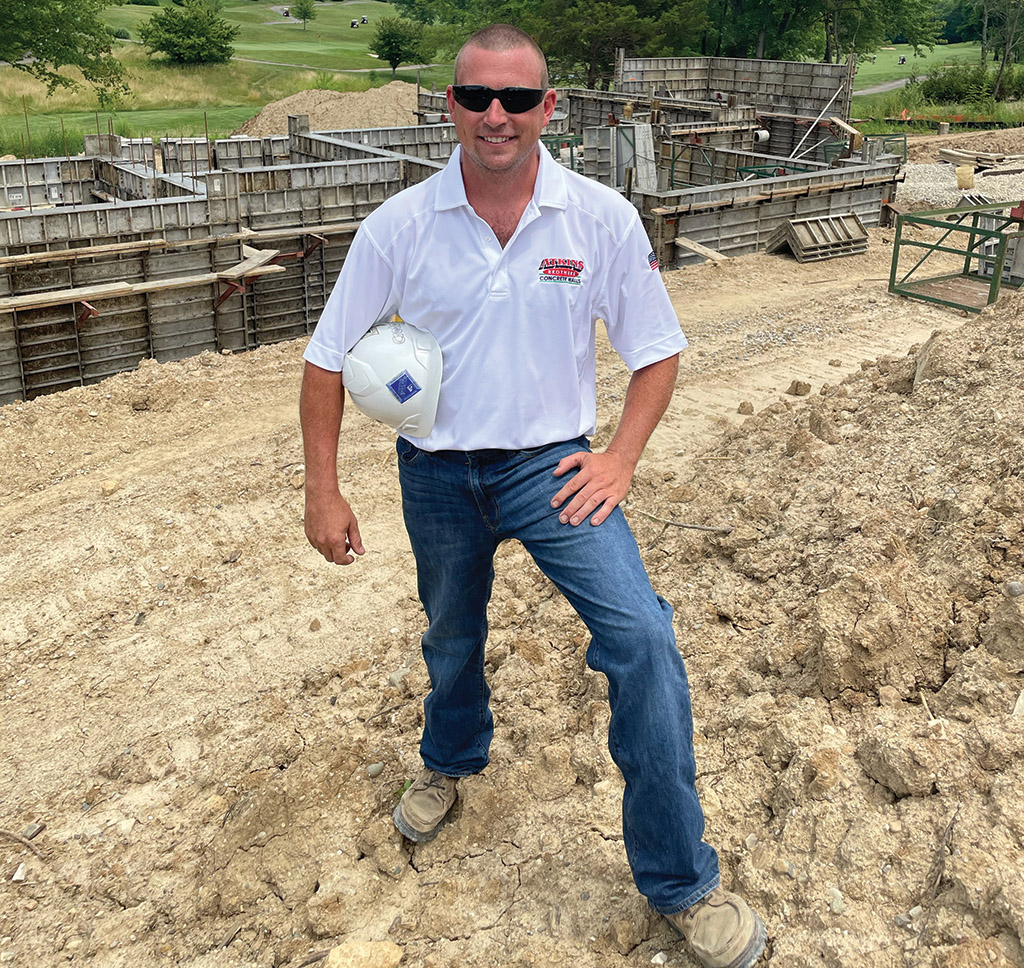
Justin Atkins
Crew Leader
Atkins Brother Concrete Walls, Inc.
Contractor Member
Beavercreek, Ohio
my grandpa nicknamed me “the man” because I was never doing kid stuff
A second-generation contractor, my story has similarity to many in the CFA, yet my road has some definite curves. I grew up on a small farm in southern Ohio. Some of my favorite memories from childhood were working with the “big boys” (my dad and grandpa). I wanted to do whatever they were doing. If they were working in the garden, so was I. If they were planting or harvesting, I was riding along on the tractor or combine with my dad. I think my grandpa nicknamed me “the man” because I was never doing kid stuff, you could always find me just helping them around the farm. Dad was also a union carpenter.
In 1993, my dad and uncle were tired of the Carpenter’s Union and decided to start a concrete wall business together. Naturally, since my dad was doing it, seven-year-old me wanted to do it also. When I had a day off from school, or during the summertime, I went to “work” with dad. By the age of thirteen I could run our crane. By sixteen, Dad dropped me at a job site with a skid loader and said, “gravel this basement.” After high school graduation, I focused on the Construction Industry Management (CIM) program through Middle Tennessee State University (MTSU) and things went well for me there. Yet, I am a hands-on guy that must see my work at the end of each day. I thanked the folks at Degussa for my scholarship, the program directors for a great year and I asked for my job back at the family business. I have had some great opportunities since then that I am very thankful to have been given, but now I think I am right where I belong.
Aside from work my biggest passion is flying. I am a private pilot and I love to fly! I also have a very large vegetable garden, and I really enjoy woodworking. But mostly, I really enjoy what we do in our concrete business, and I can remember when work went from “it’s … Monday, Tuesday, Wednesday…” to, “how close to perfect can I build this wall, or lay this slab, or dig this basement.” At some point between MTSU and now, things just clicked, and I wanted to make the most perfect product I could. I’m not sure if my dad and uncle noticed it or not. But I wanted to suck up as much knowledge as I could. I watched the beat and the fastest guys every day. I wanted to be just like them.
What I want now more than anything is to be part of seeing our business:
- Providing the most quality foundations in the Dayton, Ohio area.
- Educating our employees and hopefully other companies looking to better their quality.
- Expanding our business model to be more efficient, safer, and providing the best possible services to the contractor via “total package” foundations.
2020 showed us how much safer and more efficient we are we now have proper over-dig, flat, clean holes to work in with sump holes or exit drains to stay dry. The banks are clear of spoils, so our crews are not tripping and stumbling. We have a place to set a pump truck, park our trucks and adequate space to work. We took control of the parts of the job that are important for our safety and our success.
Labor is and will continue to be a big issue for us, as I know it is for all our colleagues. A few years ago, we went to a 4×10 work week with optional Fridays, while daylight would allow us to do so. This has made us more profitable, and our guys have longer weekends for rest, relaxation and recovery. At a time when gas prices are on the rise again, everyone keeps more money in their pocket, and we have seen this improving our position as a destination employer.
Twenty Years! Where Does Time Go?
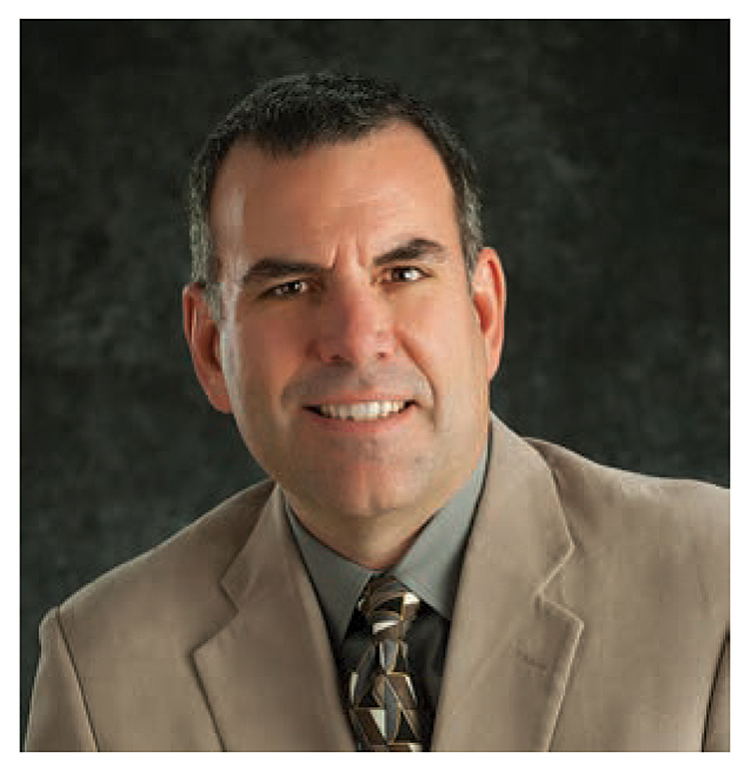
jbaty@cfaconcretepros.org

This spring marks the completion of twenty years serving as a staff member for the Concrete Foundations Association. Having received an invitation in early 2000 to consider a change of career focus, I could never have imagined the diverse world that I would soon move into, one where every day is marked with a different focus, direction, and opportunity.
June 1, 2001, was my official start date. In a blink of an eye, my world changed as did the world around all of us. September 11 of that year forever changed travel, organization, communication and even relationships. As I quickly learned, the framework history of this association, built from its start in 1974, was suddenly at risk. However, like so many threads within this country, the network of the CFA refused to give in to such risk and resolved to strengthen and become a more effective fabric.
Some of the greatest moments were on the horizon (now in the rearview mirror). The largest convention gatherings took place in Mt. Hood, Oregon (2002); Myrtle Beach, South Carolina (2003); and the Wisconsin Dells (2006). These were landmark events on the capabilities and impact of the CFA at that time. Delivered through these years were cutting edge research in Cold Weather and industry-shaping initiatives like the Concrete Homes Council, the CFA Standard, and the delivery of the first residential concrete code, ACI 332. A largely overlooked concrete culture, relegated to the earliest of sub-contracts before the actual house construction began, was strengthened beyond relevant to influential.
The momentum reached its peak, but not due to a cycle of energy. Rather, it was suddenly stripped of its resources and attention as the housing bubble burst and the Great Recession was ushered in. Despite the reality that was the most difficult business climate in eighty years, the vitality of CFA carried on and a focus switched to advocacy. Together we faced greater project- by-project scrutiny, due in large part to the lower volume, and strengthened our commitment to thought leadership, validating knowledge with certification.
In the years since recovery, good times have turned to great. Companies that have taken the challenge to become and remain in membership have uncovered unparalleled resources and taken full advantage of the convenience technology has afforded. No other time has taught more than the last fifteen months as the pandemic completely reshaped access to each other and challenged the very safety of the workforce while business remained in great demand.
Today, we stand stronger, more nimble, proven, and confident. We face present turmoil such as material shortages and price escalation, strengthened government regulations, and employment (or unemployment) complacency with grace and patience. We rely on each other and this Association for the same measure of resourcefulness and a renewed passion for knowledge. This continues to be a most amazing and incredible opportunity, and I very much look forward to what the next decade will reveal.
Let’s Get Back Together Again
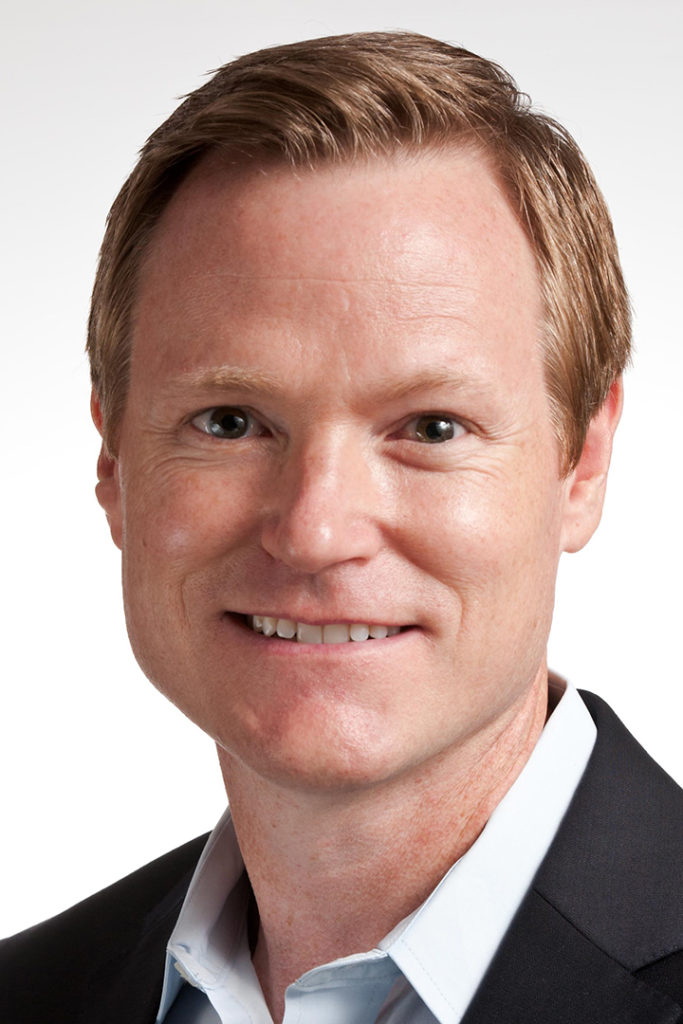
Doug Herbert
Herbert Construction Company
doug@herbertconstruction.com
The annual CFA Convention is fast approaching. After going virtual in 2020, we are happy to announce that we’re getting back together for this year’s in-person event.
The event will take place in beautiful Charleston, SC. Having been to the city on a few occasions, I can assure you that it lives up to its Top 10 U.S. destination reputation. There are things to see and do for all ages. It’s a hit with families and couples, alike.
But the main reason for attending this year’s Convention is the education and networking that we have put together for you.
It will be a great mix of hearing from professional speakers as well as panel discussions with fellow contractors just like you.
Here are some of the topics that will be discussed…
Attracting new employees and developing your workforce.
Helping leaders create a culture engaging front-line workers to improve the bottom line.
Creating better, more economical concrete with a smaller carbon footprint.
What to expect from the Biden administration.
How to grow your company without increasing debt.
Creative solutions contractors have used to solve problems
There is much, much more you will be part of in the these classes. In addition, you’ll be able to learn about new technologies from our sponsors and exhibitors. You can attend the awards gala to see who wins the Project of the Year along with the professional achievement awards.
You’ll even have a chance to go on a dinner cruise through the incredible Charleston Harbor.
But most importantly (and most impactful for your business), you’ll be able to network with other concrete contractors to see how they are tackling the same issues you are facing.
If you are a residential concrete contractor, then there is no other event that is tailor-made to improve your bottom line like this year’s CFA Convention. So, make plans – or change the ones you already have – and make it to Charleston in July. You’ll be glad you did.
It’s time to get back together again.

Doug Herbert, CFA President
Wall Tie Shortage, and New Initiatives

Doug Herbert
Herbert Construction Company
doug@herbertconstruction.com
As if dealing with COVID-19 and World of Concrete getting cancelled wasn’t enough, residential concrete contractors faced a severe wall tie shortage this Spring.
As soon as the issue was brought to our attention by CFA member, Dan Bromley, the association mobilized and immediately began working on the problem. With terrific work by our Executive Director, Jim Baty, the CFA placed itself directly at the center of the situation.
We brought together the steel mills, stampers, distributers, and contractors to find out exactly what was causing the shortage. The association raised awareness by warning the homebuilding industry and general public about the economic impact of this issue.
While the tie supply is still not plentiful – it will take time to see the fruits of our labor – I firmly believe that we all would be in a dire situation if not for the efforts of the CFA.
This was one of the biggest threats residential wall contractors have ever faced, and the CFA was there to help the situation. If that isn’t a reason to be a member of this great organization, I don’t know what is.
Thank you to Jim and all the companies that got involved to address the situation.
Now that the tie issue has been stabilized, the Board of Directors of the CFA are moving forward with the path set forth by our strategic planning session held late last year.
Our five areas of focus are:
- Advocacy
- Workforce Development
- Education
- Membership
- Networking
A task force was created for each of these areas to identify ways to improve and provide more value to our members. Based on the work of each task force and input from the Board of Directors, here are the first five initiatives the Association will begin working on:
- Create an on-demand education program that members can utilize to improve various aspects of their business.
- Add a full-time position on CFA staff that will focus on increasing membership and improving retention of members.
- Enact a modest increase in membership dues to provide more services and benefits to members.
- Create designated networking groups of non-competing contractor members so they can share and learn from each other.
- Develop a demographic survey of members to help the CFA staff connect members with similar contractors.
The Board of Directors and CFA staff have begun working on the implementation of these five initiatives. Throughout this year, our members will see the benefits of these actions. If you aren’t yet a member, now is a great time to join so you can improve your business.


